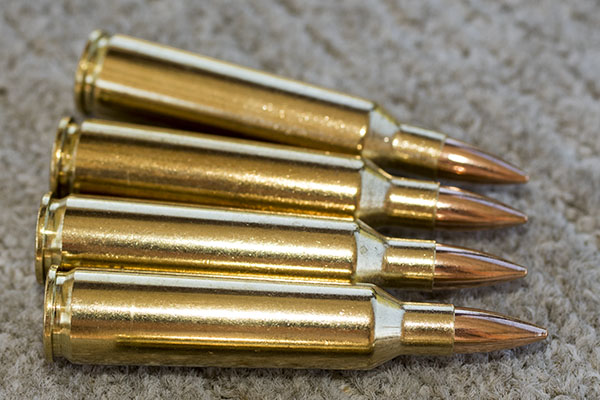
One of the hottest .22 centerfires ever conceived, the .22 250’s wildcat ancestry goes all the way back to 1937, and to this day it is still one of the world’s hottest .22 centerfire cartridges. The concept was simple enough: Take the .250 Savage, neck it down to .224 caliber, stuff it full of the right powder, and oila, you get a .22 250. Capable of exceeding 4,000 feet per second with lighter bullets, it’s a cartridge so fast that if you pick the wrong bullets, they’ll disintegrate in flight due to aerodynamic heating and spin-induced centrifugal forces. That’s fast, folks.
Until 1963, if you wanted a .22 250 you had to build your own rifle. Browning offered a production rifle chambered for the .22 250 that year, but even then you couldn’t just walk into a store and buy ammo. No, the .22 250 was still a wildcat. You had to make your ammo: Form the brass from another cartridge case, and roll your own. Then in 1965 in a nod to the .22 250’s appeal, Remington changed all that. They offered a .22 250 rifle and the factory ammo to go with it, and it was an instant success.
My Dad was a member of an east coast woodchuck hunter/killer pack back in the 1960s and he regarded the .22 250 as the Holy Grail. Dad used a .243 Winchester Model 70 (another hotrod in its day), but he spoke of the .22 250 in hushed and reverential terms. Dad never owned a .22 250 and that might have been his only character flaw, a family deficiency I’ve been making up for ever since. I remember visiting Effinger’s with Dad before I shipped out to Korea (Effinger’s was an outstanding gunshop in central New Jersey that only recently closed their doors). They had a Ruger No. 1 .22 250 in stock and Dad came close to buying it. But he didn’t. He let it get away and he lamented that loss for years.
Life went on, I spent a year in Korea compliments of Uncle Sam, and then I came back to Fort Bliss, Texas. One night I was in a K-Mart in El Paso (when K-Mart sold guns), they had a bolt action Ruger Model 77 in .22 250, and you can guess the rest. I think I paid $169 (the list price on a Ruger Model 77 was $215 back then). It’s a beautiful rifle with classic American bolt action styling. The bluing is deeper than deep (infinitely richer than what you see on new rifles today), the hand-cut checkering is perfect (today’s rifles have mostly laser cut checkering that’s fuzzy as an old peach), and the profile is just right (thank you, Len and Bill). The walnut is a joy to behold even though it’s straight-grained and doesn’t have much figure, and that red recoil pad is classy. This rifle is nearly five decades old, but it still looks new.
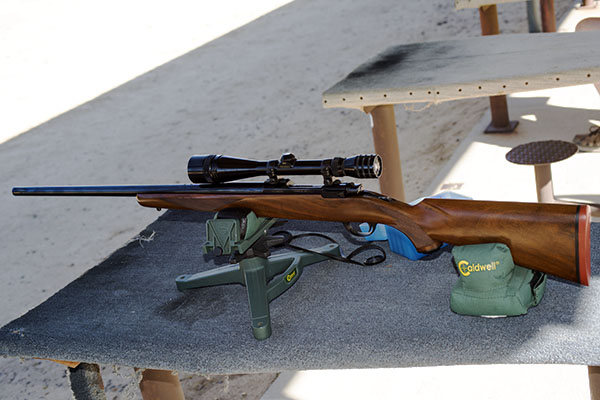
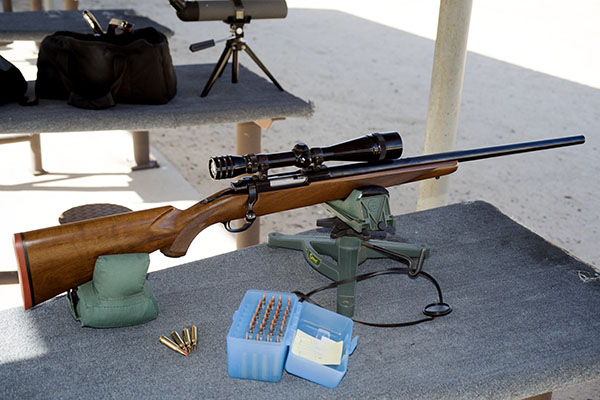
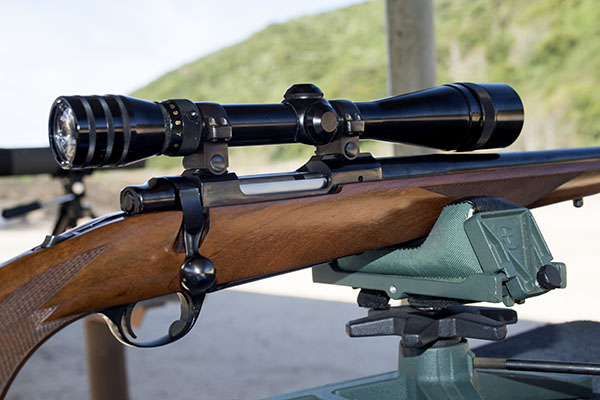
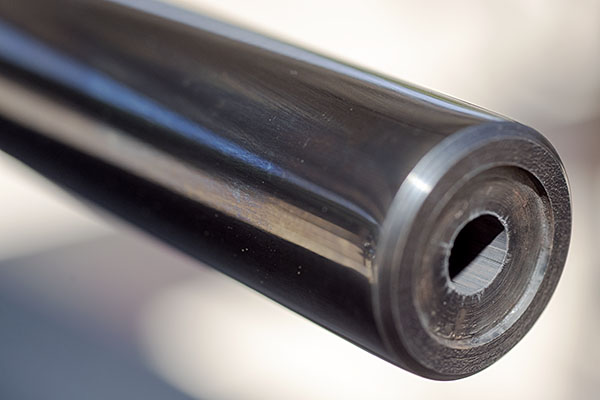
I tested the Ruger with Nosler 60-grain Varminter bullets at different H380 powder levels. H380 is the “go to” powder in .22 250, and I wanted to see what it would do with the Nosler bullets.
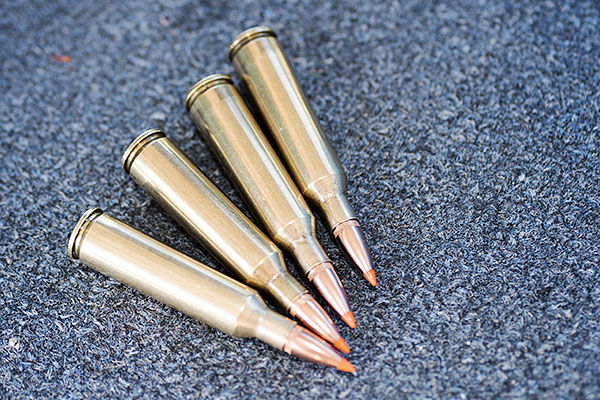
My buddy Greg recently acquired a .22 250, and that got me interested in shooting mine again. I dug it out of the safe, loaded some ammo, and settled on on the 100-yard line. I tried four different loads for a ladder test using H380 propellant and Nosler’s 60-grain ballistic tip bullet (the rounds you see in the photo above).
I’d like to brag about great groups with the above loads, but the results were disappointing. Sometimes that happens. You have to kiss a few frogs in the reloading game to find a prince (sometimes you have to kiss a lot of frogs), and let me tell you, every one of my loads during that range session was amphibious. But that’s okay. When you develop a load for a rifle, you find out what works and what doesn’t. My Ruger .22 250 doesn’t like Nosler 60-grainers and H380. Now I know.

I knew the rifle had potential, though. Here’s earlier data with lighter bullets:

That one load at the bottom of the table showed real promise, so I loaded a few more with the same 52-grain Hornady bullets and tested them a few days later. Here’s what I found:

The above results were promising, but there were inconsistencies in how the lighter bullets grouped. What was driving that? Was it me being a Shakey Jake, or was it something else? I took a hard look at the bullets, and to my surprise, more than half of them had deformed tips.
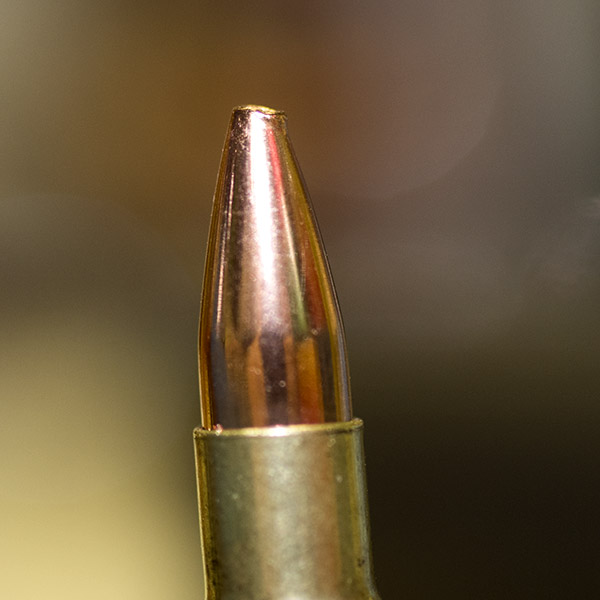
I called Hornady to ask about the deformed tips, and their guy explained to me that what I was seeing was indeed a bullet defect. He asked me for the lot number on the bullet box, and it turned out these bullets were manufactured in 2013 (which is weird, because I had only purchased them a year or two ago). You’ll remember that 2013 was in the Obama era when component shortages were common and the factories were struggling to keep up with demand. These bullets should have never left the factory, and the Hornady rep put a box of replacement bullets in the mail for me that same day. Hornady is a good company that stands behind their products.
Not content to wait for the new bullets, I screened the ones I had and selected bullets with no visible tip deformation for the next reloading lot. I also tried neck-sizing rather than full length resizing. The theory on this is that the cartridge case is fire-formed to the exact chamber dimensions of the rifle, and it should more precisely locate the bullet in the chamber (when you neck size only, you only resize the case where it grabs the bullet). With visually-screened bullets and neck-sized cases, the M77 returned about the same accuracy. But I was seeing more groups below an inch, and I even had one below a half inch:

There’s still variability and that’s probably due to me. There may still be issues I couldn’t see to screen in the bullets, but I think things are moving in the right direction. So what’s next? Varget is another powder reported to do well in the .22 250 (there’s a can of it on my bench), and the new box of Hornady bullets arrived last week. And I’ve got a few more accuracy tricks I want to try. We’ll see what happens.
More gun stuff is right here!

What do you hunt with a 22-250? Is it purely a varmit round?
Bob, I’ve never shot at anything with the Ruger .22 250 other than paper targets and rocks. Other folks use them on all sorts of small game (rabbits, coyotes, woodchucks, prairie dogs, etc.). I’ve heard of people using this cartridge on deer, but that’s not something I would do. There are a lot of .22 250 shooters out there. The hits on this blog are through the roof.
Morning. I have an 22250 custom build. Remington floated bullbarrel cz action, timney trigger 14 chamber silenser with a Rudolph 6x24x50 T3 scope. Last year I shot an black wilde bees at 230m 1 shot and with immediate death behind the ear. This fire arm is my pride with my 2506 and 7×57
Wow, who would have thought such a small round could do so much. I do have a concern that not only you are kissing frogs, but you are doing so to make a Prince. I would suggest you discuss this with Susan.